 John Mata Jr.
.
May 09, 2022
.
c10
John Mata Jr.
.
May 09, 2022
.
c10
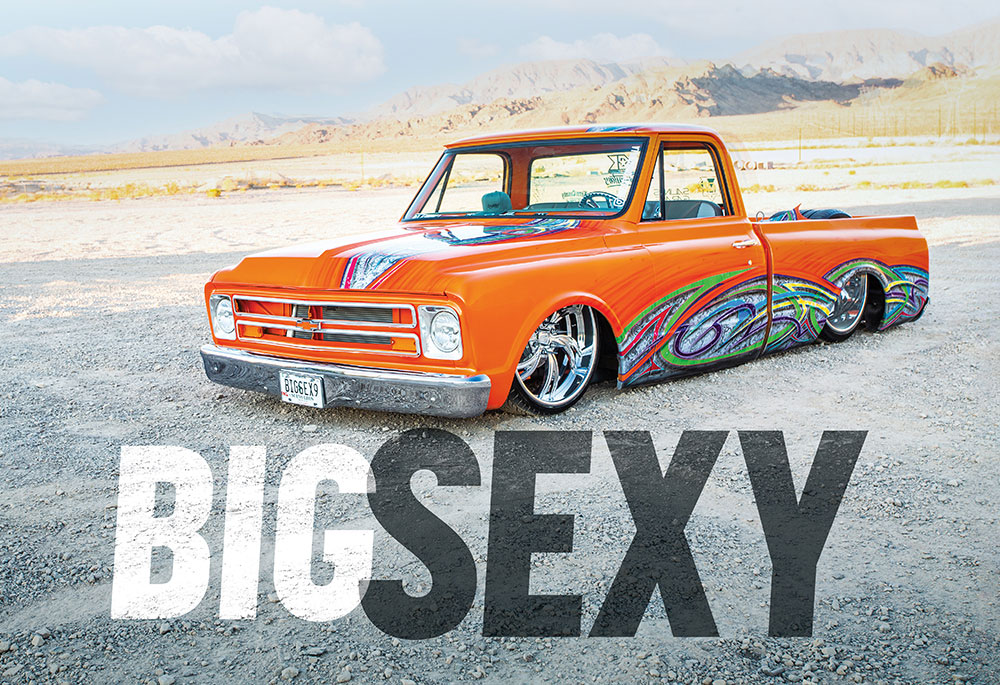
Take a good look at this truck. Go on, do it. Yes, this ’69 Chevy C10 truck is downright gorgeous on an obvious “eye candy” level, but more importantly, it’s a physical representation of what years’ worth of hard work, dedication and staying true to one’s own style can will into existence. Now, that’s the epitome of having enviable beauty both inside and out.
Yes, this ’69 Chevy truck is downright gorgeous on an obvious “eye candy” level, but more importantly, it’s a physical representation of what years’ worth of hard work, dedication and staying true to one’s own style can will into existence.
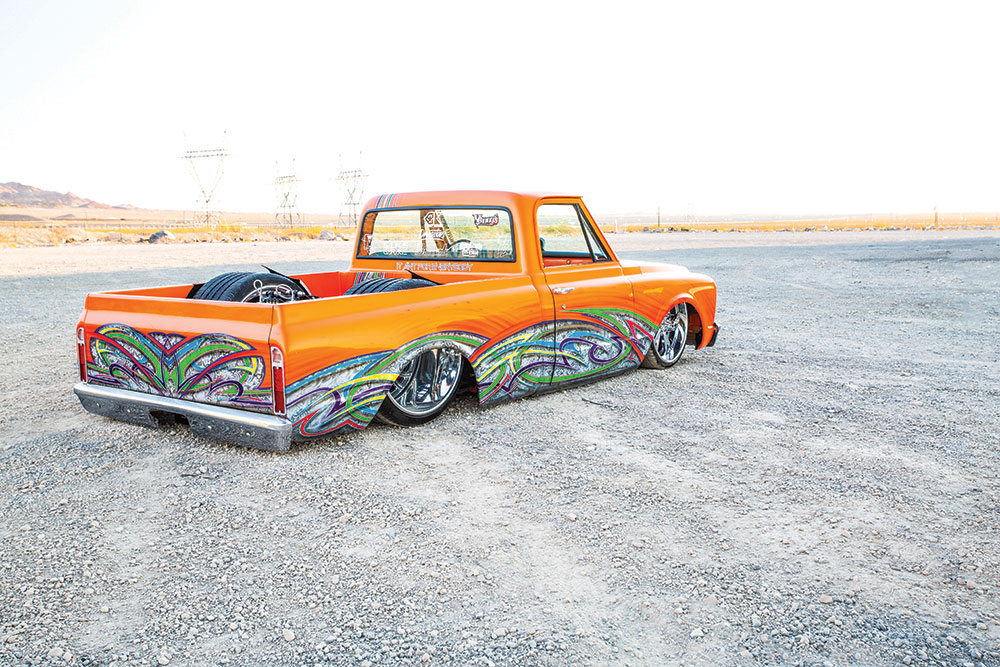
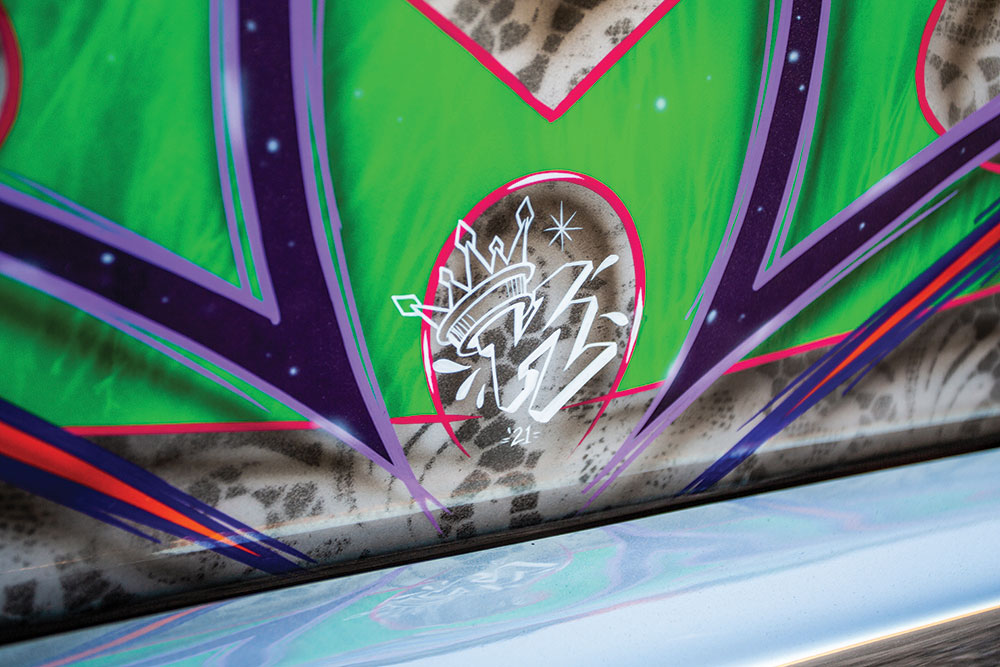 Family Business
Family BusinessThis C10 is the product of father/son duo Hector Quintanilla and Hector Jr. of McFarland, California. The Quintanilla family moved to the central California area from Texas in 2011, but before they made the trek to the West Coast, Hector Sr. was in a serious auto accident that resulted in his custom ’65 Impala lowrider becoming a total loss. As bad of a situation that it was, it helped propel the entire family through to the much better times that were ahead.
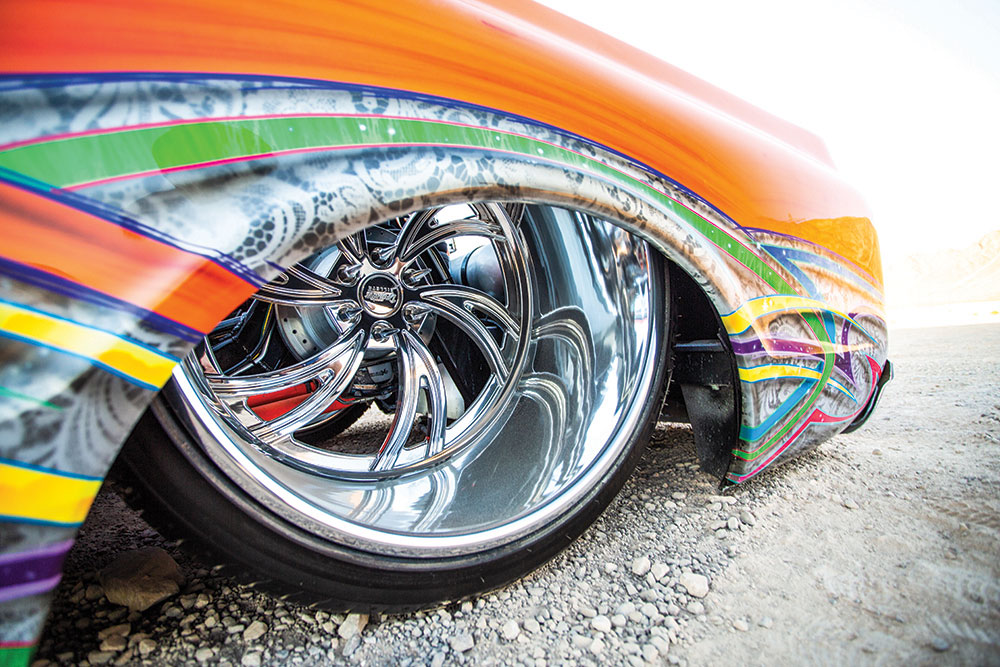
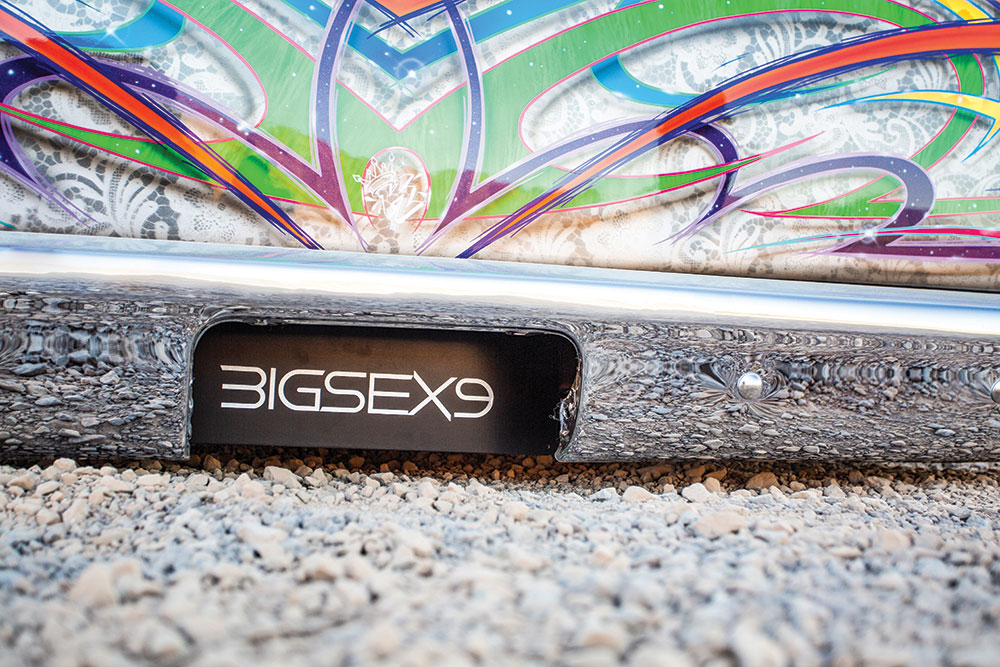
Instead of taking that money and blowing it on another car right away, Hector combined whatever the insurance paid out for his Impala along with everything he had in his savings and invested all of it into his family.
“We started a family business when we arrived in California,” Hector says. “After a few years, we finally got on our feet, and my son and I decided in 2021, the 10th anniversary of our business, that it was finally time to build ourselves another dream vehicle to replace the Impala we had lost.”
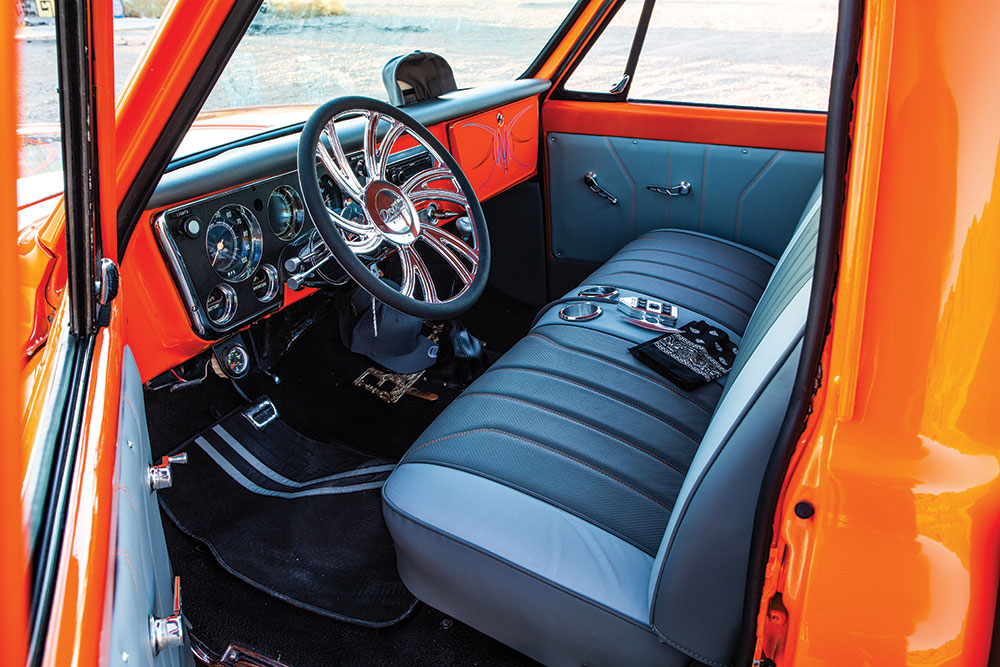 SEMA Dreams
SEMA DreamsThe C10 platform proved to be an ideal one for the Quintanillas to use to break down and make their own. And to keep the ’69 they had sourced built as organically as possible, they relied heavily on the local central California talent pool to help create one hell of a classic Chevy pickup.
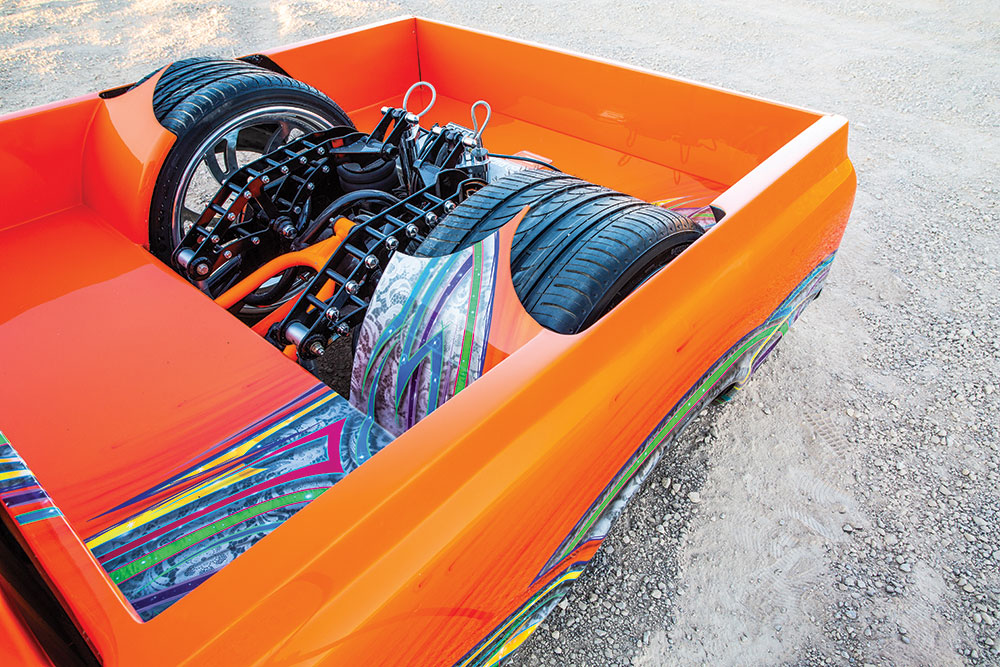 While Hector and Hector Jr. were intrigued in building a truck that represented their own style, they did have a larger goal they planned on reaching at the same time—to debut their C10 at SEMA ’21 (and to possibly make the cover of a major truck publication in the process).
While Hector and Hector Jr. were intrigued in building a truck that represented their own style, they did have a larger goal they planned on reaching at the same time—to debut their C10 at SEMA ’21 (and to possibly make the cover of a major truck publication in the process).
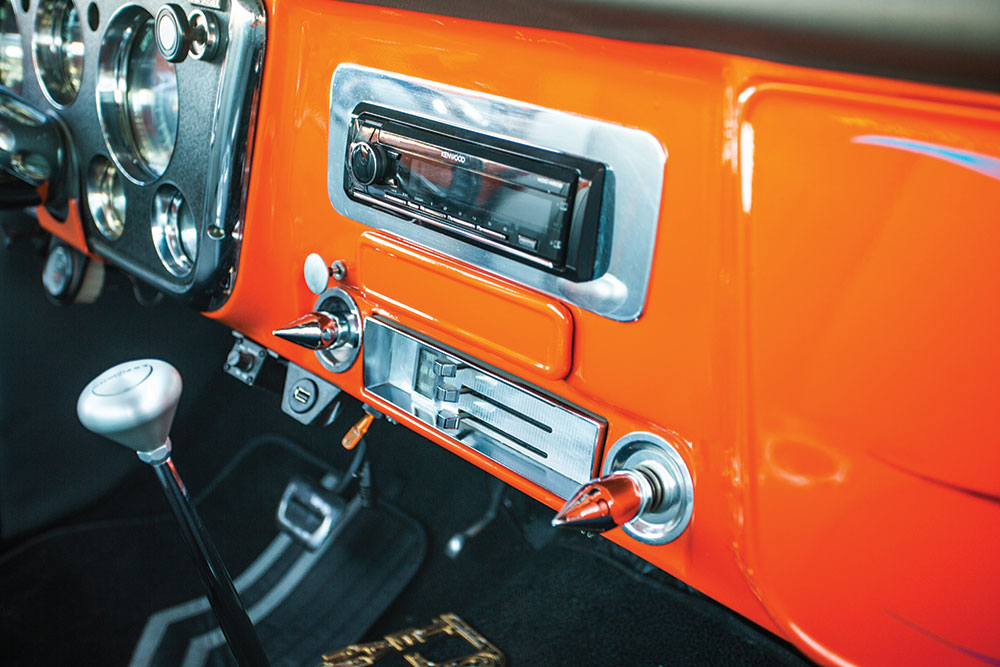 They knew they could accomplish what they set out to do if they made all the right moves, and the first step in their plan was to have the suspension dialed in to get the truck sitting at an all-time low. To assist in the Chevy’s altitude adjustment, Vinny’s Metal Fab in Porterville, California, signed on to not only ‘bag the C10, but to perform a bodydrop to maximize its decrease in stature.
They knew they could accomplish what they set out to do if they made all the right moves, and the first step in their plan was to have the suspension dialed in to get the truck sitting at an all-time low. To assist in the Chevy’s altitude adjustment, Vinny’s Metal Fab in Porterville, California, signed on to not only ‘bag the C10, but to perform a bodydrop to maximize its decrease in stature.
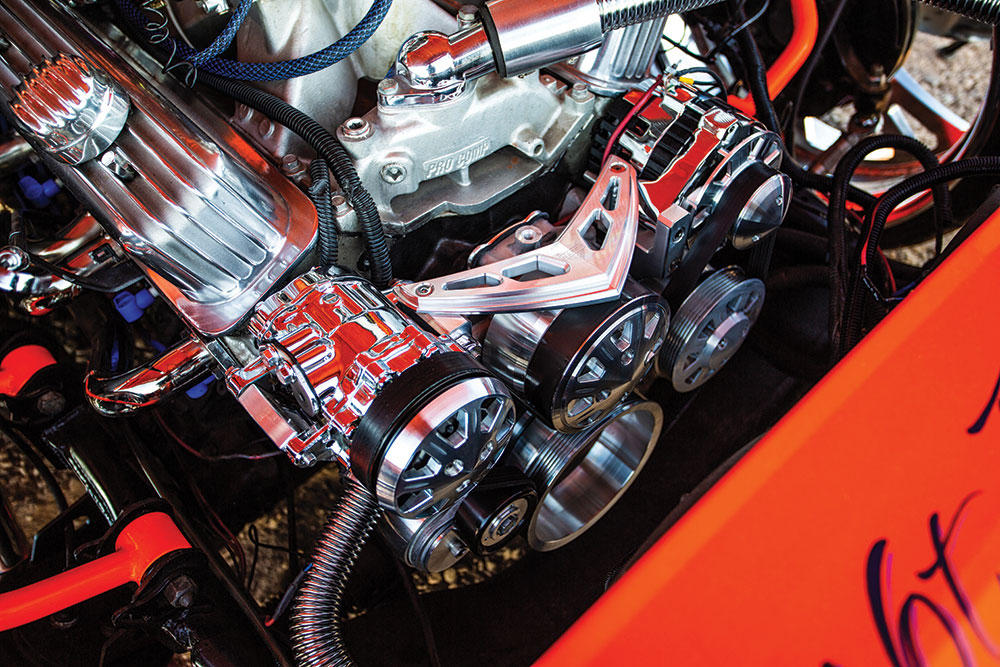
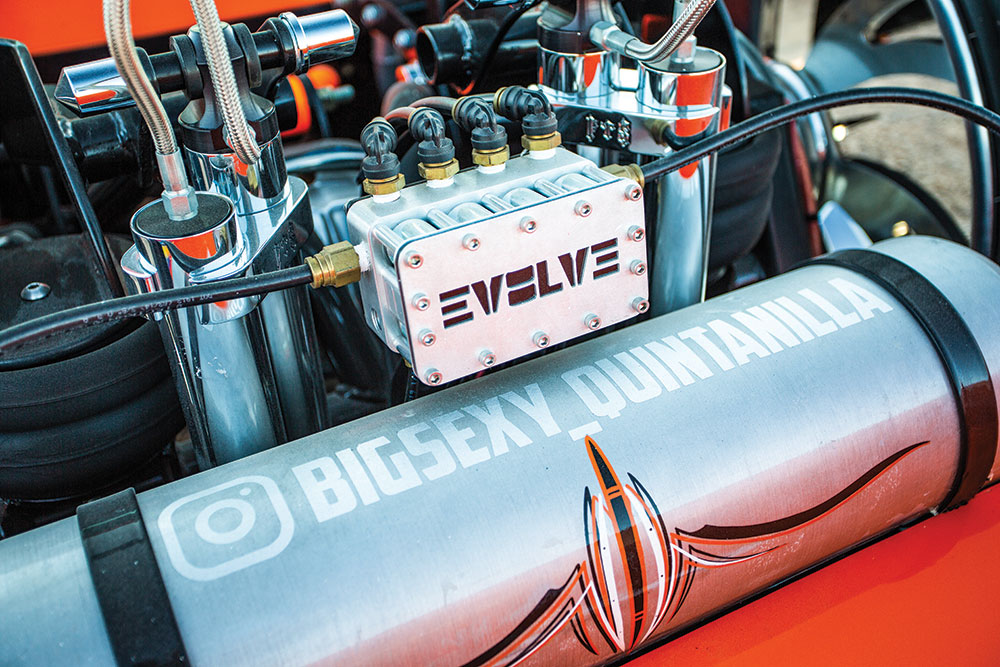
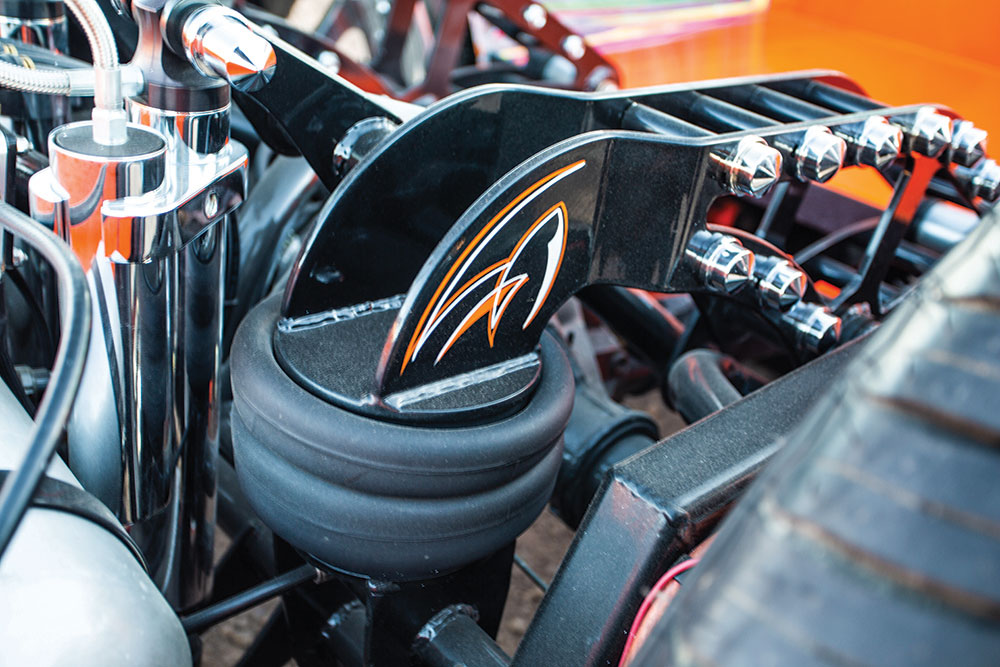 To better complement the C10’s new stance, Hector and his son began their search for the perfect wheel design and size. Naturally, the guys were looking to go big, and the set they landed on was a staggered fitment of front 24×9 and a whopping rear 26×16 Dropstars B21 billet wheels. These aren’t modest chunks of metal by any means, and they knew there would have to be a lot of careful fabrication to clear the space needed to allow the truck and wheels to cohabitate peacefully. Luckily, that issue would soon be addressed and all potential problems would be alleviated.
To better complement the C10’s new stance, Hector and his son began their search for the perfect wheel design and size. Naturally, the guys were looking to go big, and the set they landed on was a staggered fitment of front 24×9 and a whopping rear 26×16 Dropstars B21 billet wheels. These aren’t modest chunks of metal by any means, and they knew there would have to be a lot of careful fabrication to clear the space needed to allow the truck and wheels to cohabitate peacefully. Luckily, that issue would soon be addressed and all potential problems would be alleviated.
The Chevy small-block was outfitted with tried and true performance upgrades that would ensure it would run smoothly and efficiently for the long haul.
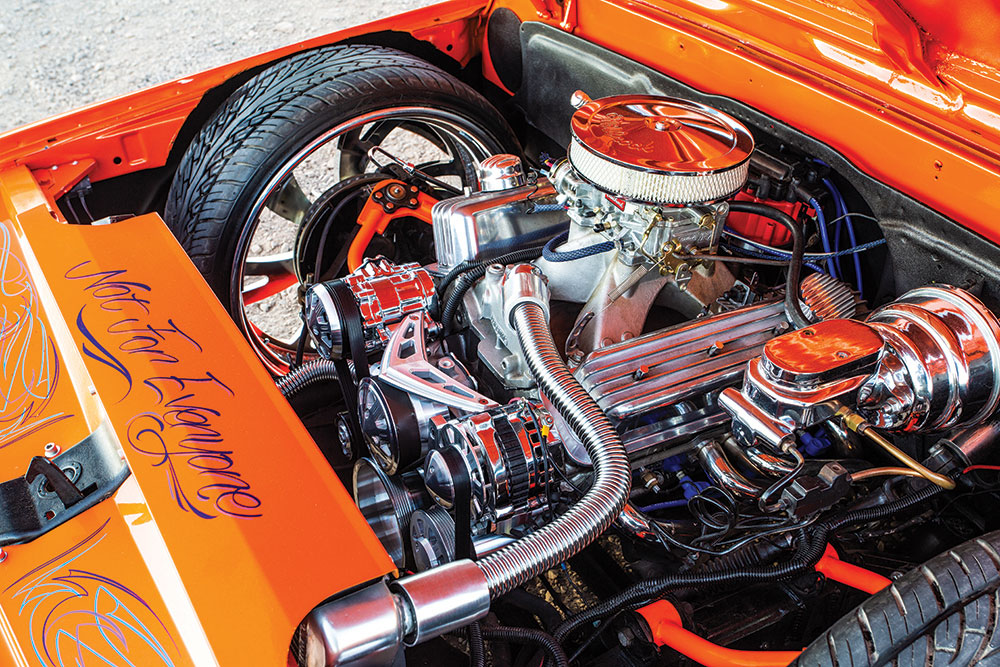
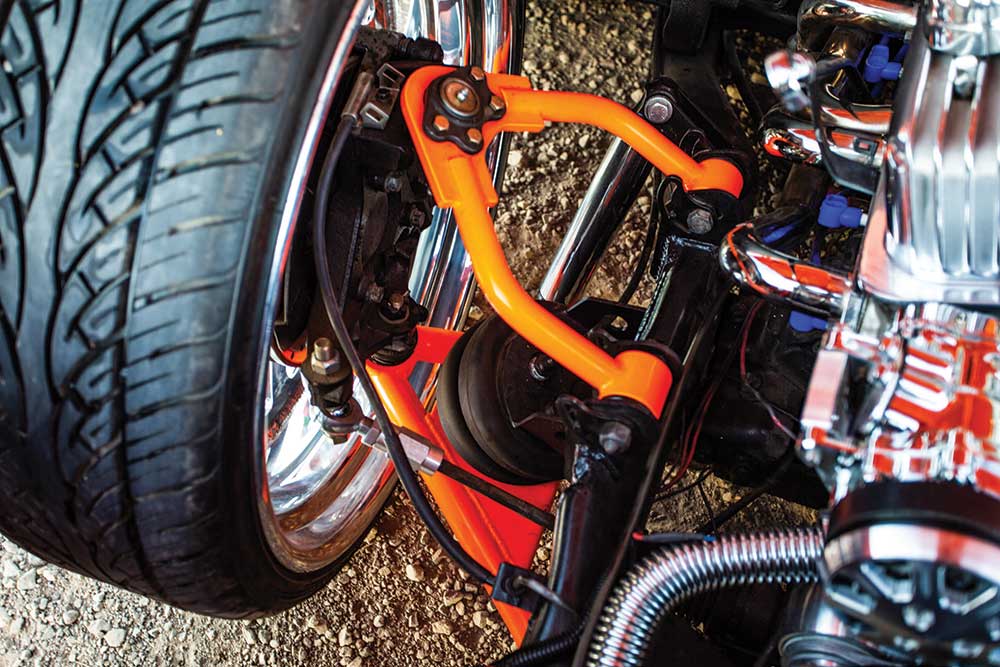 Under the Hood
Under the HoodChoosing the right powerplant to fit underneath the hood was one of the major hurdles that presented itself during the build phase. It can be easy to reach for a crate engine, namely an LS, given the huge amount of support from the aftermarket, which Hector was surely tempted by.
“My only reservation about moving away from an LS would be going against the grain of what has become the norm these days,” he admits.
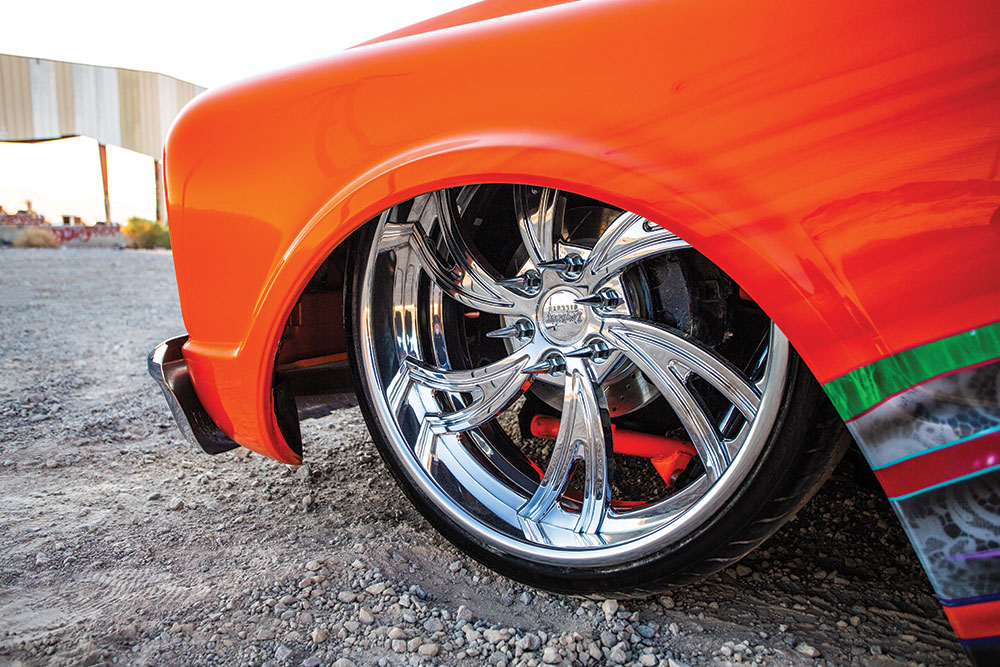
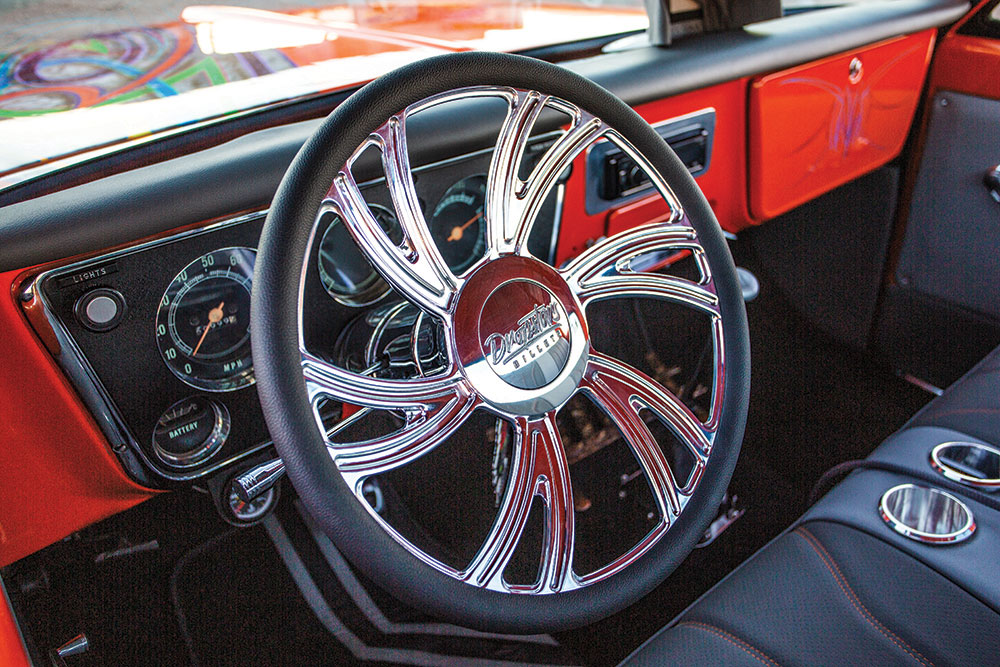 Instead, the guys decided to keep the engine selection “old school,” as they relied on a 350ci implant to get the job done. Bakersfield, California, native, Kyle Gann, better known to some as “Kdaddy,” played a big role in getting the engine well dressed and ready to rock. The Chevy small-block was outfitted with tried and true performance upgrades that would ensure it would run smoothly and efficiently for the long haul.
Instead, the guys decided to keep the engine selection “old school,” as they relied on a 350ci implant to get the job done. Bakersfield, California, native, Kyle Gann, better known to some as “Kdaddy,” played a big role in getting the engine well dressed and ready to rock. The Chevy small-block was outfitted with tried and true performance upgrades that would ensure it would run smoothly and efficiently for the long haul.
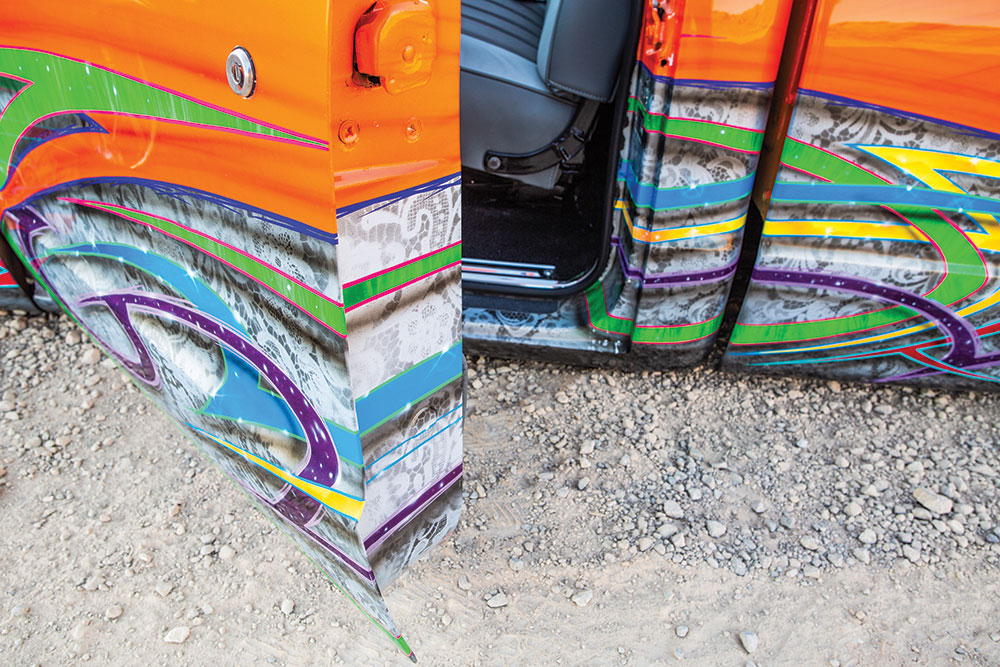 Time for Paint
Time for PaintIf you recognize the Kdaddy name and associate it more with Kyle’s talents in the body and paint game, you’ll get a kick at the next phases in the build process. Kyle has owned and operated Kdaddy Kustomz for quite a long time now and has since achieved much-earned legend status among mini-truck, motorcycle and lowrider circles—not to mention within just about any custom street vehicle genre as well. The Quintanillas wanted a paint scheme that was loud and had an undeniably cool old school aesthetic, and Kyle was the best source to deliver all of that and more.
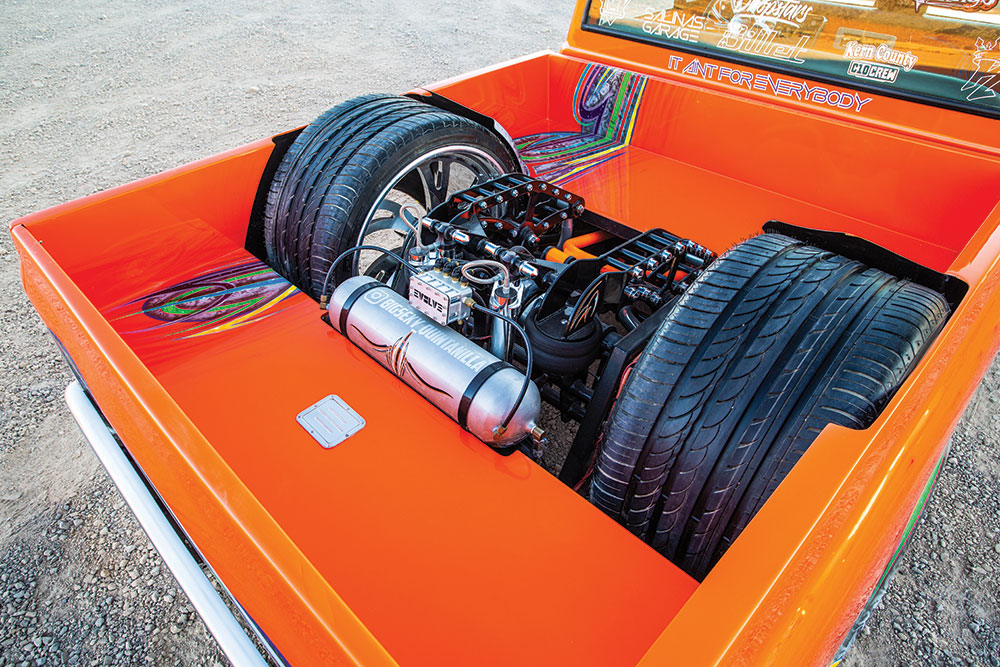 Before any paint could be sprayed, however, the C10’s exterior had to first be prepped correctly, and to do his part on sculpting the metal just right, Chris McCombs of Rough Cut Customs worked his metal magic on the bed, including fabricating a set of motorcycle-style rear fender flares. The center of the bed was cut and left exposed to showcase the workings of the rear back half, as well as to flex just how girthy the rear meats really are.
Before any paint could be sprayed, however, the C10’s exterior had to first be prepped correctly, and to do his part on sculpting the metal just right, Chris McCombs of Rough Cut Customs worked his metal magic on the bed, including fabricating a set of motorcycle-style rear fender flares. The center of the bed was cut and left exposed to showcase the workings of the rear back half, as well as to flex just how girthy the rear meats really are.
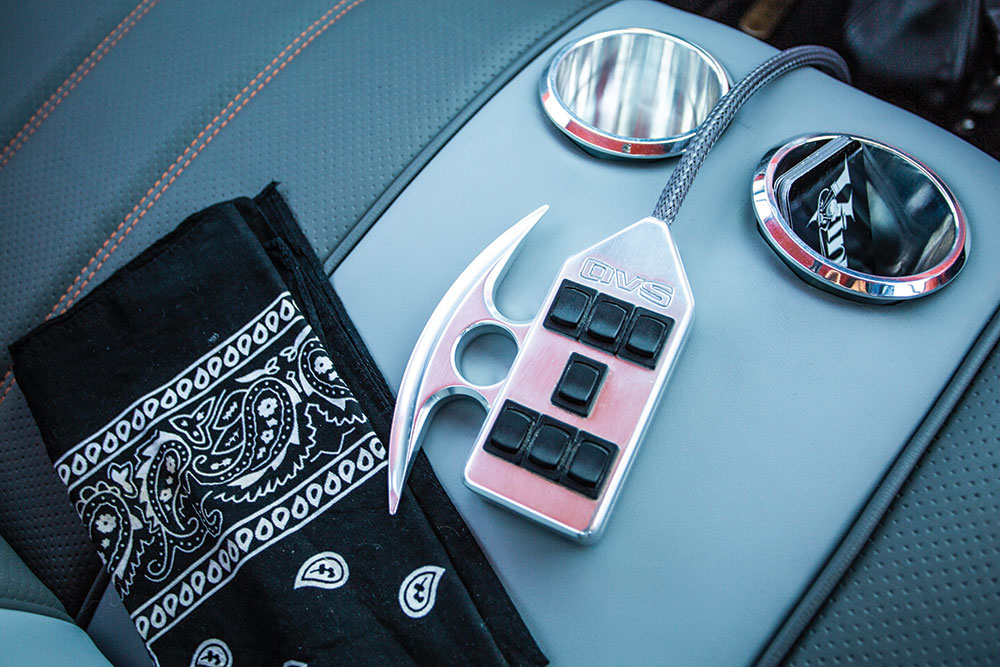 From there, the rest of the bodywork and panel alignment was handled at Kdaddy headquarters, and in no time at all, Kyle was finally able to bless the C10’s surface with one of his signature ’90s SoCal style paintjobs—it doesn’t get much more iconic than this in the custom truck scene!
From there, the rest of the bodywork and panel alignment was handled at Kdaddy headquarters, and in no time at all, Kyle was finally able to bless the C10’s surface with one of his signature ’90s SoCal style paintjobs—it doesn’t get much more iconic than this in the custom truck scene!
With as much noise this truck made at its fateful unveiling at SEMA ’21, Hector Sr. made it a point to reflect on the things he learned from the experience he was able to share with his son and family, as well as so much local talent of his hometown.
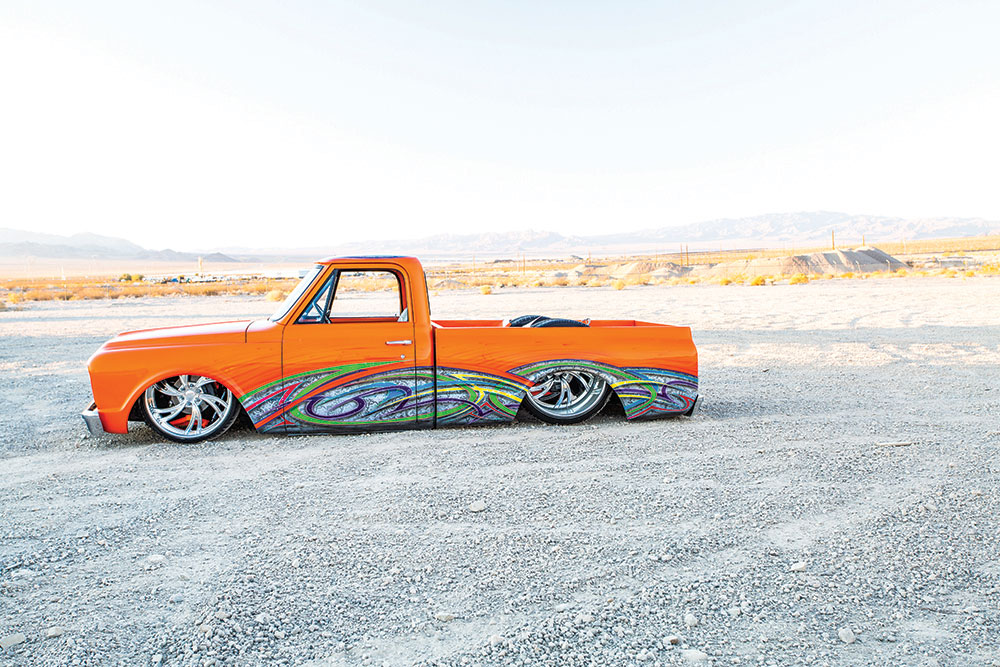
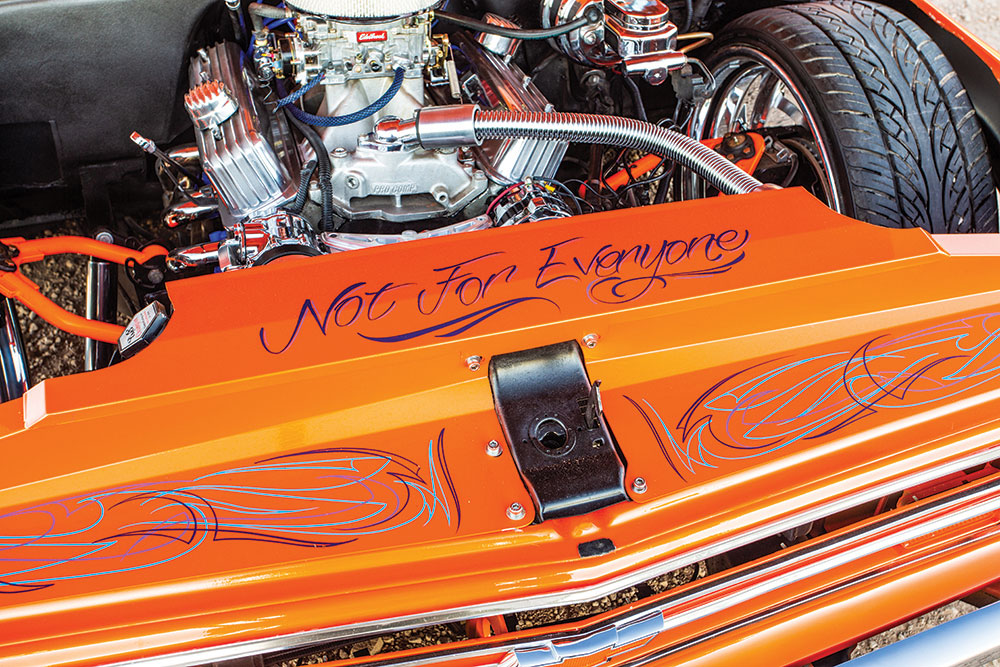
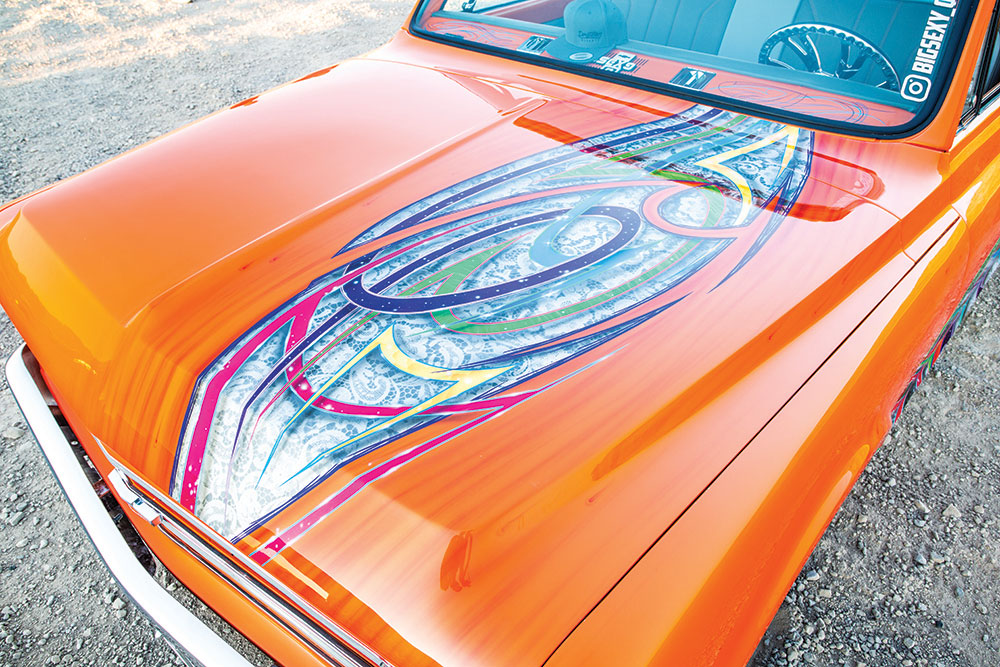 “I’ve learned to truly value the importance of patience with a project like this,” he says. “More importantly though, it’s also important to build the kind of vehicle that is in your mind, no matter what others might think of it. It is OK to be different. Also, I’d like to take this opportunity to give a special thanks to Salinas Garage as well as my wife Jasmine for all her support, and to everybody involved in making this dream of ours a reality—thank you.”
“I’ve learned to truly value the importance of patience with a project like this,” he says. “More importantly though, it’s also important to build the kind of vehicle that is in your mind, no matter what others might think of it. It is OK to be different. Also, I’d like to take this opportunity to give a special thanks to Salinas Garage as well as my wife Jasmine for all her support, and to everybody involved in making this dream of ours a reality—thank you.”
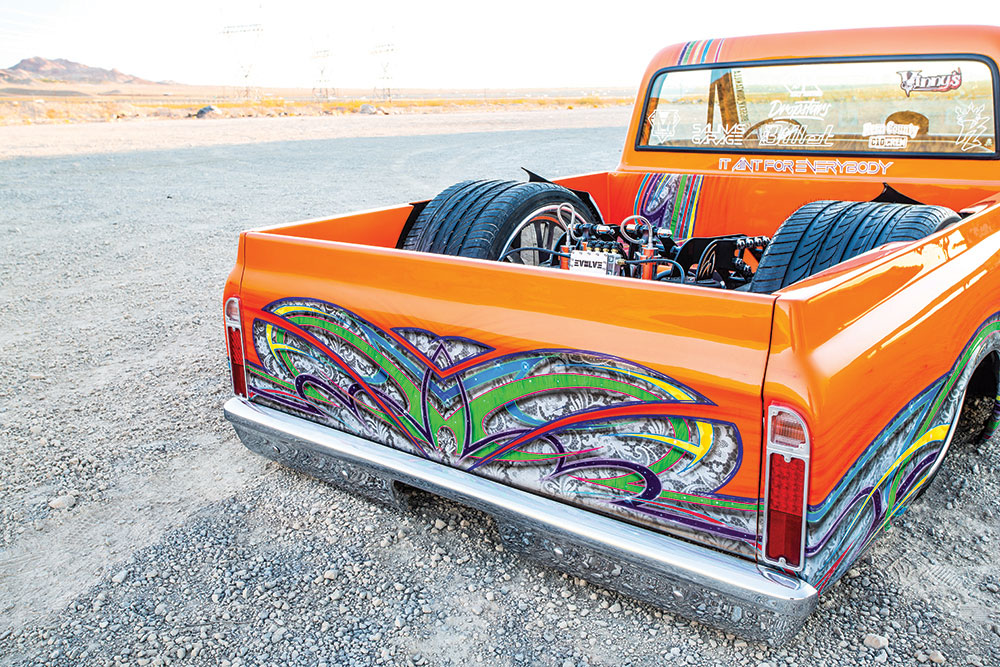
OWNER
Hector Quintanilla
McFarland, CA
1969 Chevy C10
Engine/Drivetrain
Chassis/Suspension
Wheels, Tires & Brakes
Body/Paint
Interior
What were the available color options for the 1969 Chevrolet C-10’s exterior and interior?
When looking at the 1969 Chevrolet C-10, both exterior and interior color options provided a wide array of choices.
The exterior of the C-10 offered a variety of vibrant and classic shades, including:
For the interior, the options mirrored some of the exterior colors to maintain a cohesive look:
These selections allowed buyers to customize their trucks with a personalized style that suited their tastes, whether they preferred bold and bright hues or classic, understated tones.
What were the wheelbase options for the 1969 Chevrolet C-10?
The 1969 Chevrolet C-10 came with two different wheelbase options:
These measurements provided flexibility depending on the desired bed length and the specific requirements of the vehicle owner.
What were the key changes in the 1969 Chevrolet C-10’s front grille design?
The 1969 Chevrolet C-10 underwent several notable updates, particularly in the front grille area.
These updates not only modernized the vehicle’s look but also reinforced its brand identity.
What were the weight specifications for the 1969 Chevrolet C-10 in both 4×2 and 4×4 configurations?
The 1969 Chevrolet C-10 had different weight specifications based on its configuration:
These variations offered flexibility depending on the drivetrain you chose.
What were the optional interior trim and comfort features available for the 1969 Chevrolet C-10?
The 1969 Chevrolet C-10 offered a variety of interior trim and comfort upgrades to enhance both style and convenience. Here is a breakdown of the optional features available:
These options allowed owners to tailor their 1969 Chevrolet C-10 to better fit their personal preferences and needs, making it not just a utilitarian vehicle but also a stylish and comfortable ride.
What types of transmissions could be paired with the 1969 Chevrolet C-10’s engines?
If you’re curious about the transmission types available for the 1969 Chevrolet C-10, here’s a comprehensive breakdown:
Each of these transmission types could be paired with any of the engines offered for the 1969 Chevrolet C-10, allowing for a customizable driving experience tailored to your needs and preferences.
Consider what fits best with your driving style and desired power output to make the most out of this classic pickup.
What were the available bed options for the 1969 Chevrolet C-10?
The 1969 Chevrolet C-10 came with a variety of bed options to cater to different needs and preferences. Buyers could choose between two main styles:
Each bed style was available in two different lengths:
Additionally, the trucks were available with two wheelbase options:
These combinations allowed buyers to customize their trucks to suit their specific requirements, whether for personal use or work-related tasks.
What interior design changes were made to the 1969 Chevrolet C-10?
The 1969 Chevrolet C-10 saw several significant updates to its interior. Among these, a sleek, low-profile two-spoke steering wheel was introduced, promoting a modern look and feel. The gear shift lever was now conveniently mounted on the steering column, enhancing driver ease.
Additionally, the seatbacks were redesigned to offer a full bench seat, providing more comfort and a seamless look across the cab. A foot-operated parking brake replaced previous mechanisms, adding to the vehicle’s updated ergonomic features.
What were the distinguishing features of the standard C10 trim level?
The standard C10 trim level stood out with several distinctive features. These included plain black window gaskets and a painted bumper. It also had a bright metal grille shell, adding a touch of shine to the front facade, and painted hubcaps that gave the wheels a clean and consistent look.
For those interested in customization, side trim molding was available as an option, featuring a black-painted center. However, unlike some other trim levels, the standard C10 did not offer molding for the tailgate and taillights, maintaining a simpler rear design.
What was the price range for brand new 1969 Chevrolet C-10 trucks when they were sold?
The price range for brand new 1969 Chevrolet C-10 trucks fell between $2,494 and $2,569 at the time of sale.
What additional features did the Custom Sport Truck (CST) trim offer over the Custom C10?
The Custom Sport Truck (CST) trim brought several enhancements over the standard Custom C10. Here’s a breakdown of what you can expect with the CST trim:
These additional features make the CST trim a comprehensive upgrade over the Custom C10, combining visual enhancements with added comfort and customization options.
How did the Custom C10 trim differ from the standard C10?
The Custom C10 trim set itself apart from the standard C10 with several distinctive features. First, it proudly displayed unique nameplates on the front fenders, a clear marker of its upgraded status. The exterior was adorned with bright metal trim that accented the windshield, rear window, window pillars, and front grille, which featured plastic grid design inserts.
Unlike the painted bumpers and hubcaps of the standard C10, the Custom C10 offered the option of chrome hubcaps for a more polished look. Optional beltline molding could be added to enhance the vehicle’s aesthetic, with painted centers and moldings extending to the taillights and tailgate.
Inside, the Custom C10 boasted rubber floor mats and color-coordinated fabric seats with full foam cushioning, trimmed in vinyl for added comfort and durability. The door panels were also dressed in vinyl trim and included armrests, providing both style and practicality that set it apart from the standard model.
How many half-ton trucks were produced in 1969, and what were the production numbers for I-6 and V-8 engines?
In 1969, the total production of half-ton trucks reached an impressive 480,000 units. Breaking it down by engine type:
This data showcases a substantial preference for V-8 engines during that year.
What was the GMC version of the 1969 Chevrolet C-10 called?
The GMC counterpart to the 1969 Chevrolet C-10 was named the Jimmy.
What were the standard and optional engines available for the 1969 Chevrolet C-10?
Choosing the right powerplant to fit underneath the hood was one of the major hurdles that presented itself during the build phase. It can be easy to reach for a crate engine, namely an LS, given the huge amount of support from the aftermarket, which Hector was surely tempted by.
“My only reservation about moving away from an LS would be going against the grain of what has become the norm these days,” he admits.
Instead, the guys decided to keep the engine selection “old school,” as they relied on a 350ci implant to get the job done. Bakersfield, California, native, Kyle Gann, better known to some as “Kdaddy,” played a big role in getting the engine well dressed and ready to rock. The Chevy small-block was outfitted with tried and true performance upgrades that would ensure it would run smoothly and efficiently for the long haul.
To appreciate their choice even more, let’s delve into the standard and optional engines available for the 1969 Chevrolet C-10:
These classic options offered a range of power and performance to suit various needs and preferences, making the C-10 a versatile and customizable choice for enthusiasts.
What were the performance specifications of the engines available for the 1969 Chevrolet C-10?
The performance specifications for the optional engines were as follows:
What were the optional engines available for the 1969 Chevrolet C-10?
The optional engines available for the 1969 Chevrolet C-10 included a 292 cubic inch inline-six, a 307 cubic inch V-8, and multiple V-8 options ranging up to 350 horsepower.
What was the standard engine for the 1969 Chevrolet C-10?
The standard engine for the 1969 Chevrolet C-10 was a 250 cubic inch inline-six engine, delivering 155 horsepower and 235 lb-ft of torque.
What are the notable features of the 1969 Chevrolet C-10’s exterior design?
The Quintanillas wanted a paint scheme that was loud and had an undeniably cool old school aesthetic, and Kylewas the best source to deliver all of that and more. Before any paint could be sprayed, however, the C10’s exterior had to first be prepped correctly, and to do his part on sculpting the metal just right, Chris McCombs of Rough Cut Customs worked his metal magic on the bed, including fabricating a set of motorcycle-style rear fender flares.
The center of the bed was cut and left exposed to showcase the workings of the rear back half, as well as to flex just how girthy the rear meats really are. From there, the rest of the bodywork and panel alignment was handled at Kdaddy headquarters, and in no time at all, Kyle was finally able to bless the C10’s surface with one of his signature ’90s SoCal style paintjobs—it doesn’t get much more iconic than this in the custom truck scene!
But let’s not forget the classic design elements that make the 1969 Chevrolet C-10 a standout even before the custom touches. The most noticeable changes to the exterior were in the front grille. It featured a single round headlight outlined by a square border at each end, separated by a horizontal bar with ‘Chevrolet’ embossed into it. The Bow Tie emblem was moved to the nose of a more upright hood, adding to its striking appearance.
Both fleet side and step side beds were offered in 6.5-ft. Or 8-ft. Boxes, with 115- or 127-in. Wheelbases, providing versatility for various needs. These original design features laid a solid foundation for the custom work, seamlessly blending the timeless appeal of the 1969 C-10 with modern, eye-catching modifications.
What types of brakes were used in the 1969 Chevrolet C-10?
This combination ensures exceptional performance and style. The Dropstars billet wheels paired with Carrera 405 Series tires offer unmatched road grip and durability. The inclusion of 2006 Chevy Silverado brakes provides modern stopping power, while the original four-wheel hydraulic, drum brakes (11 x 2.75 in) maintain the classic feel and look of the 1969 Chevrolet C-10. This blend of contemporary and vintage components creates a unique driving experience that honors the truck’s legacy while enhancing its capabilities.
By preserving the original drum brakes and integrating modern elements, you get the best of both worlds—authenticity and innovation.
Share Link